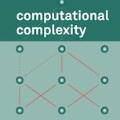The demand for on-device document recognition systems increases in conjunction with the emergence of more strict privacy and security requirements. In such systems, there is no data transfer from the end device to a third-party information processing servers. The response time is vital to the user experience of on-device document recognition. Combined with the unavailability of discrete GPUs, powerful CPUs, or a large RAM capacity on consumer-grade end devices such as smartphones, the time limitations put significant constraints on the computational complexity of the applied algorithms for on-device execution. In this work, we consider document location in an image without prior knowledge of the document content or its internal structure. In accordance with the published works, at least 5 systems offer solutions for on-device document location. All these systems use a location method which can be considered Hough-based. The precision of such systems seems to be lower than that of the state-of-the-art solutions which were not designed to account for the limited computational resources. We propose an advanced Hough-based method. In contrast with other approaches, it accounts for the geometric invariants of the central projection model and combines both edge and color features for document boundary detection. The proposed method allowed for the second best result for SmartDoc dataset in terms of precision, surpassed by U-net like neural network. When evaluated on a more challenging MIDV-500 dataset, the proposed algorithm guaranteed the best precision compared to published methods. Our method retained the applicability to on-device computations.
翻译:随着更加严格的隐私和安全要求的出现,对在线文件识别系统的需求增加,对在线文件识别系统的需求也随之增加。在这类系统中,没有数据从终端设备向第三方信息处理服务器的传输。响应时间对于用户的在线文件识别经验至关重要。加上缺少离散的GPU、强大的CPU或对智能手机等消费者级终端设备的巨大记录管理能力,由于时间限制,对在线执行应用算法的计算复杂性设置了重大限制。在这项工作中,我们考虑的是没有事先了解文件内容或其内部计算结构的图像中的文件位置。根据已出版的工作,至少5个系统为在线文件识别位置提供了解决方案。所有这些系统都使用了一种可以被视为基于人工智能文件的定位方法。这类系统的精确度似乎低于用于计算资源有限的最先进的计算方法。我们建议了一种基于Hough的先进方法。 与其他方法不同,我们采用其他方法,它记录了在所出版的文件中的地理变量中比较了内部文件的易变式比较。




